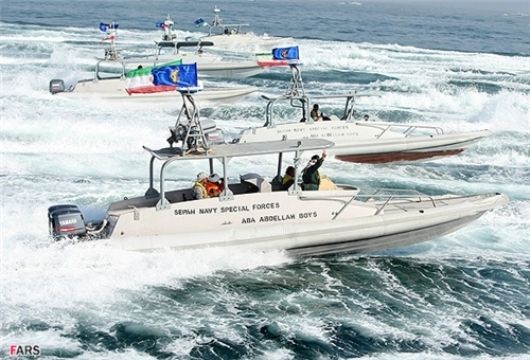“We have today built highly advanced hulls which are appropriate for high speed and raging seas, state-of-the-art propulsion systems and advanced nano-coverings for the speed vessels,” Lieutenant Commander of the IRGC Navy Rear Admiral Majid Zamani said, addressing the Third Forum on Iran’s Speed Vessels in Tehran on Wednesday.
“We have also acquired radar and telecommunication systems which have been built specifically for speed vessels,” he continued, and boasted that these radar and telecommunication systems are new to the world.
Iran in February unveiled 21 radar and electronic defense projects in a ceremony participated by Defense Minister Brigadier General Hossein Dehqan.
“Today, we are witnessing inauguration of 5 production lines and unveiling of 16 defense projects,” Dehqan told reporters in the Southern city of Shiraz.
He said 2 radar systems for defensive surveillance, which are among the advanced detection radars for high-altitude air surveillance, are ready for being delivered to the Iranian Armed Forces.
Also in the field of radar subsystems, 2 important military lights, one x-ray lamp and a 5-liter oxygen converter for the cockpit have been manufactured, Dehqan said.
He also said that Iran has launched 6 important and strategic products in air and naval electronic fields, including sonar, subsurface telecommunication and ground systems, ground antenna and air computers installed on aircrafts and radars to identify friendly aircraft from enemies.
The Iranian defense minister also said that the country’s experts have built a smart disruptive radar system which can to jam different radar waves and certain missile guidance subsystems.
In recent years, Iran has made great achievements in its defense sector and attained self-sufficiency in producing essential military equipment and systems.
Tehran launched an arms development program during the 1980-88 Iraqi imposed war on Iran to compensate for a US weapons embargo. Since 1992, Iran has produced its own tanks, armored personnel carriers, missiles and fighter planes.
Yet, Iranian officials have always stressed that the country’s military and arms programs serve defensive purposes and should not be perceived as a threat to any other country.
Iran’s naval power has even been acknowledged by foes. In a Sep. 11, 2008 report, the Washington Institute for the Near East Policy said that in the two decades since the Iraqi imposed war on Iran, the IRGC has excelled in naval capabilities and is able to wage unique asymmetric warfare against larger naval forces.
According to the report, the IRGC Navy has been transformed into a highly motivated, well-equipped, and well-financed force and is effectively in control of the world’s oil lifeline, the Strait of Hormuz.
The study says that if Washington takes military action against the Islamic Republic, the scale of Iran’s response would likely be proportional to the scale of the damage inflicted on Iranian assets.
